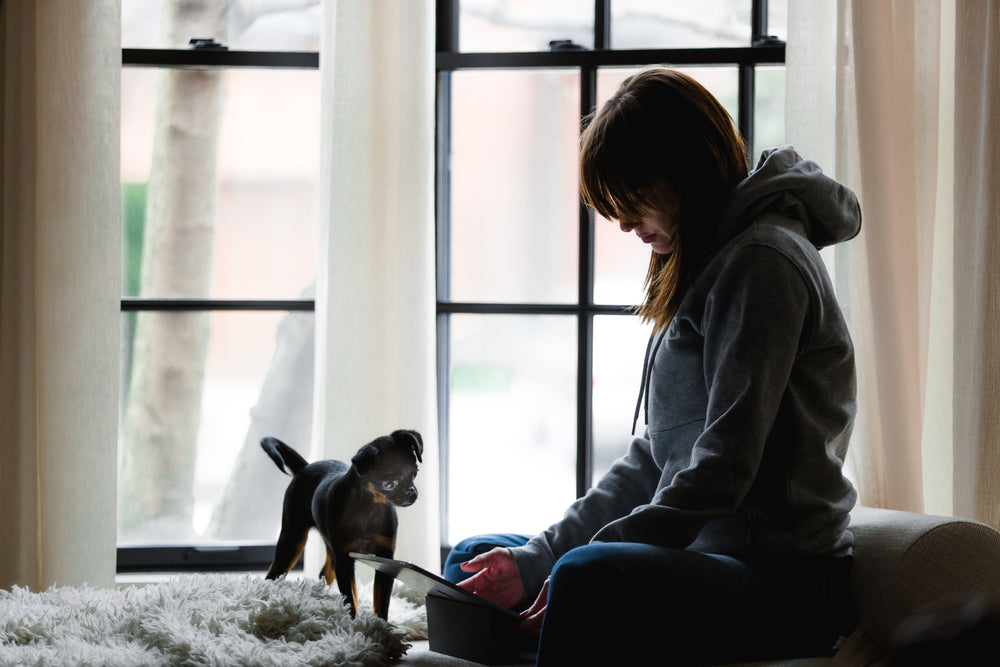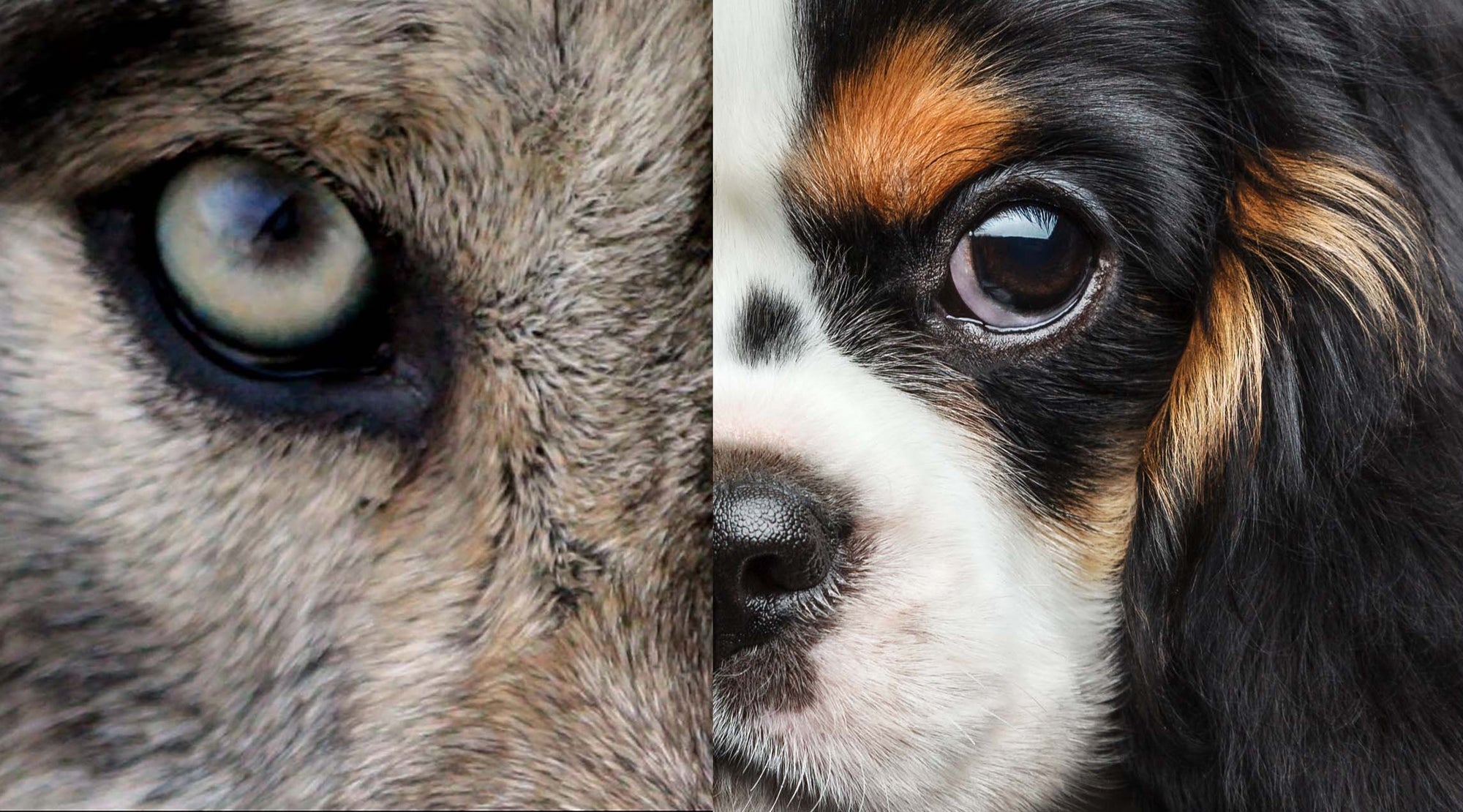So here we are again, is it a happy Monday or are you feeling the winter blues? There are a few theories about how and why the third Monday of the year came to be known by the “Blue Monday” sobriquet - and as far as we’re aware this is unrelated to the electro classic by New Order. Some think it’s a combination of the post-Christmas/New Year euphoria giving way to returns to work/school etc with credit card bills landing, dark nights and cold weather feeding into a calculation of the gloomiest day of the year, others are pretty sure it was in fact concocted by the marketing team of a travel company looking to gain PR exposure in order to sell getaways to the sun (remember those?!).
Regular readers will at this point be wondering what on earth the opening paragraph has to do with pet health/nutrition/wellbeing?! Well, this blog is our first foray into the impact of stress and worry on our pets. What many of us might or might not be feeling (depending on whether your outlook aligns to university professors adding external factors to internal drivers in a coefficient of gloom or those who wonder what will marketeers come up with next and will it have a day devoted to it) often impacts on or reflects what our pets feel too. The human-animal bond is a truly special phenomenon, described1 as “a mutually beneficial and dynamic relationship between people and animals that is influenced by behaviours essential to the health and wellbeing of both.” As out and out pet lovers, we generally consider the positive impact on both people and their pets2 - with interaction providing companionship and mental stimulation to both, and evidence that dogs produce the hormone oxytocin3 (associated with warm, fuzzy feelings and love4) when stroked. It is also possible, however, for our pets to tune in to our stresses and anxieties and to demonstrate similar responses in their emotions and behaviour5, and this can relate to both acute and chronic stress affecting pet parents being mirrored by dogs.

Stress impacts dogs in a number of ways6, with the following of particular concern. Loss of appetite can lead to weight loss and associated issues, as well as in some cases dogs obsessively chewing or licking non-food items including toys, doors, window sills or even themselves resulting in damage and/or injury. Inappetence can be of particular concern for dogs with pre-existing issues or could cause imbalance in dietary intake leading to secondary problems.
Stress leads to the release of other hormones - cortisol and adrenaline, whose evolutionary purpose is the survival of the animal (including humans!) via the fight or flight mechanism, in fact this response involves four Fs - Fight, Flight, Freeze and Fidget. As such we can observe significant behavioural changes driven by this which could involve aggression and biting (Fight), running away to escape the stressor (Flight), hiding or hunching down with his tail between his legs7 (Freezing) or exhibiting other unusual behaviours such as “zoomies” (running around with no apparent purpose or reason), digging, pacing, scratching, panting or shaking (Fidgeting).
Adrenaline can also trigger diarrhoea owing to the reduced blood flow to the digestive system (with this hormone promoting increased blood flow to other muscle groups alongside increased heart rate and blood pressure), this would usually occur in the absence of other symptoms associated with GI infections such as vomiting and fever. Inappropriate urination is another concerning loss of house training associated with stress in pets.
Finally, cortisol exposure in the long terms weakens the immune system, leading to inability to deal with what would normally be insignificant threats such as the demodectic mite which most dogs carry without problems - whereas immune-compromised pets can suffer demodectic mange which causes hair loss and skin irritation.

As we move into a new year, some of the causative factors involved include increasing numbers of us being impacted by the ongoing pandemic with variable work/social patterns - millions of us welcomed pets into our families for the first time (or at least after a long gap) as we were able to incorporate them into lives which became more home-centred. Many of these pets have had less opportunities to fully socialise owing to the distancing requirements and limits on puppy classes etc, and have settled into homes which are rarely empty. As we’ve encountered increasing normality (albeit with periodic returns to limitations) this has caused dogs and cats to deal with alone time - and in many cases separation anxiety, whereby being left alone triggers a stress response. And while we often think of this as primarily impacting dogs, associating cats with a greater degree of independence and capacity to spend time alone, feline family members can also demonstrate very similar association with caregivers to dogs9 (almost 2/3 of cats in a 2019 study8 described as “securely attached” to their families). Cats show signs as described above including house training issues and vocalisation when stressed in this way.

So, what do we do if our pets are feeling stress in similar ways to those afflicting us? Is there a fix to turnaround the January blues? Of course these issues are not something we can expect instant cures for - just as our own mental health requires long term, consistent management so does that of our pets. For separation anxiety there are a number of steps and tools which can be used which require patient work to desensitise the pet to stressors, some of which include ensuring pets have a significant period of exercise and mental stimulation before being left alone, and the provision of sensory stimuli such as interactive toys10 - a combination of engagement and something else to focus on with tiredness potentially helping the pet relax and encouraging them to take a snooze till you get back and they can play or come for an oxytocin-stimulating cuddle!
In terms of helping calm dogs and cats there are also a number of nutritional inputs which can help with reducing their anxiety levels, as well as supporting key biological processes such as digestion which is often disrupted by stress. In terms of reducing anxiety, many pet parents find there are certain herbs which can contribute to a more peaceful state of mind. Lavender11 and chamomile12 are both excellent sources of natural calming agents, in the form of certain flavonoids and essential oils such as linalool which have been proved to have anxiolytic (anxiety-reducing/ calming) effects - hence their popularity in teas, diffusers and massage oils for people as well as pets. Pheromonal diffusers may also provide a notable benefit to your pet in replicating the sensory stimulus of being with their mother as a pup/kitten.
In addition to neurobiological support, other nutrients can also support the physiological impact of stress and anxiety. The addition of nucleotides to dietary intake has been demonstrated to support repair and maintenance of healthy intestinal cells as well as contributing to the immune system13 (which is now known to link intrinsically to the gut microbiome), further aided. By the inclusion of probiotic supplementation with “good bacteria” to seed along with prebiotics to feed the microbiome14. Supporting general physical health with high quality nutrition is always important, but in pets prone to stress and anxiety offering highly palatable, digestible food which includes functional nutrients such as those listed above, with a well-tolerated and easy to digest quality protein source along with the optimum balance of vitamins, minerals and essential fatty acids (especially omega 3s) will help maintain health and minimise the impact of impaired appetite.

Just as for humans, there is hope for stressed or anxious pets, it’s probably much more common than we might have thought but with a concerted approach the future can be bright. There’s no coincidence that what’s good for our pets - exercise, stimulation and quality time with a good diet, is also good for us. As in many things in life, a positive relationship with pets adds real quality to their and our lives.
References:
1. https://www.avma.org/one-health/human-animal-bond
2. https://academic.oup.com/af/article/4/3/32/4638688
3. https://www.sciencedirect.com/science/article/pii/S0018506X11001322
4. https://www.psycom.net/oxytocin
5. https://www.nature.com/articles/s41598-019-43851-x
6. https://www.petmd.com/dog/general-health/6-ways-stress-affects-your-dogs-health
7. https://www.petplan.co.uk/pet-information/dog/advice/signs-of-stress-in-dogs/
8. https://www.petmd.com/cat/conditions/behavioral/can-cats-have-separation-anxiety
9. https://www.cell.com/current-biology/pdf/S0960-9822(19)31086-3.pdf
10. https://www.petmd.com/dog/training/how-help-dog-separation-anxiety
11. https://www.ncbi.nlm.nih.gov/pmc/articles/PMC3612440/
12. https://www.ncbi.nlm.nih.gov/pmc/articles/PMC2995283/
13. https://aspenjournals.onlinelibrary.wiley.com/doi/10.1177/0884533611434933




